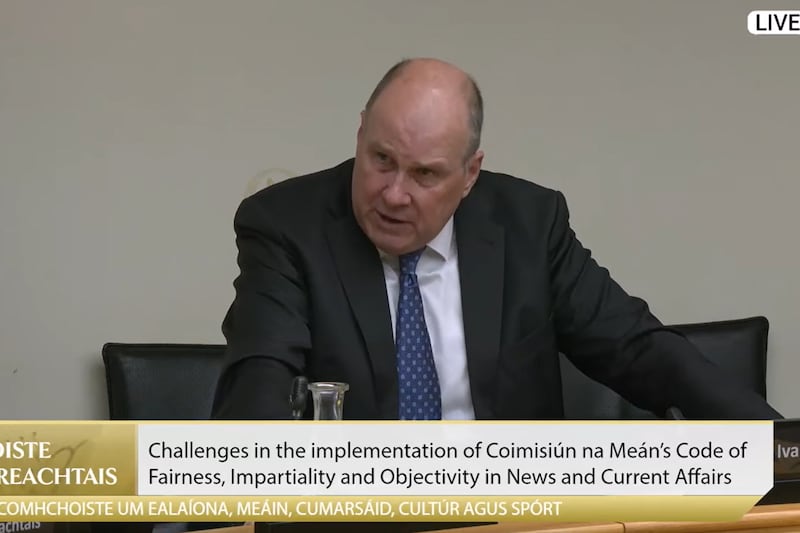It was the calm tone in the Government’s Covid-19 radio ad earlier this month that prompted me to write in The Irish Times media column that the time for gentle suggestions to wear “face coverings” (whatever they are? – more confusion) – was over.
Where I wondered was the creative, effective advertising for face masks?
In the early months of the pandemic, the daily press conferences broadcast from the Department of Health did the heavy lifting in slamming the reality of coronavirus in our faces and putting us all on alert. Now we have only wordy public service announcements, and in the case of face masks, there is little clarity, or direction.
The column was written before masks were mandatory on public transport and advised in shops, but I suggested that a health measure that’s scientifically acknowledged to work – and that many people were already adopting anyway – doesn’t have to be a legal obligation to be clearly explained, because if the benefits are widely understood, behavioural change typically follows. And advertising can do that.
In the early 1980s, Aids prevention information in the US took the form of basic public service messages, wordy abstinence-promoting bulletins that were largely ignored. By 1987 it was brutally clear the messaging wasn’t working. In that year 48,000 people in the US died from HIV/Aids – a figure that prompted public panic and a rethink about the communication.
Condoms were then understood to help halt the spread of the virus and general consumer-focused campaigns for condom brands soon sprung up – not without controversy on moral grounds – but where they were treated like just another product. They were advertised on TV and in print with glossy photographs and clever slogans, stressing the health rationale and dealing with perceived problems around “comfort” and “not liking them”. In the first year of widespread condom advertising, sales in the US rose by 40 per cent.
Veteran adman Peter McPartlin, one of the most experienced advertising and media executives in the country – now with his own start-up (with Una Herlihy), the Indie List – responded to the column by writing a campaign brief for face masks. He sent it out to art directors and copywriters to see if there was any interest in a speculative – unofficial – face mask campaign.
The most important message, says McPartlin, was “we needed people to change their behaviour not over time but overnight”. Creative director Pearse McCaughey came on board to refine the brief and filter the submissions. The response, says McPartlin, was quick and enthusiastic.
Some campaigns are at concept stage. Others look ready to go. Here’s a selection.
MASK UP
By Bernie Martin and Nicola Wielopolski
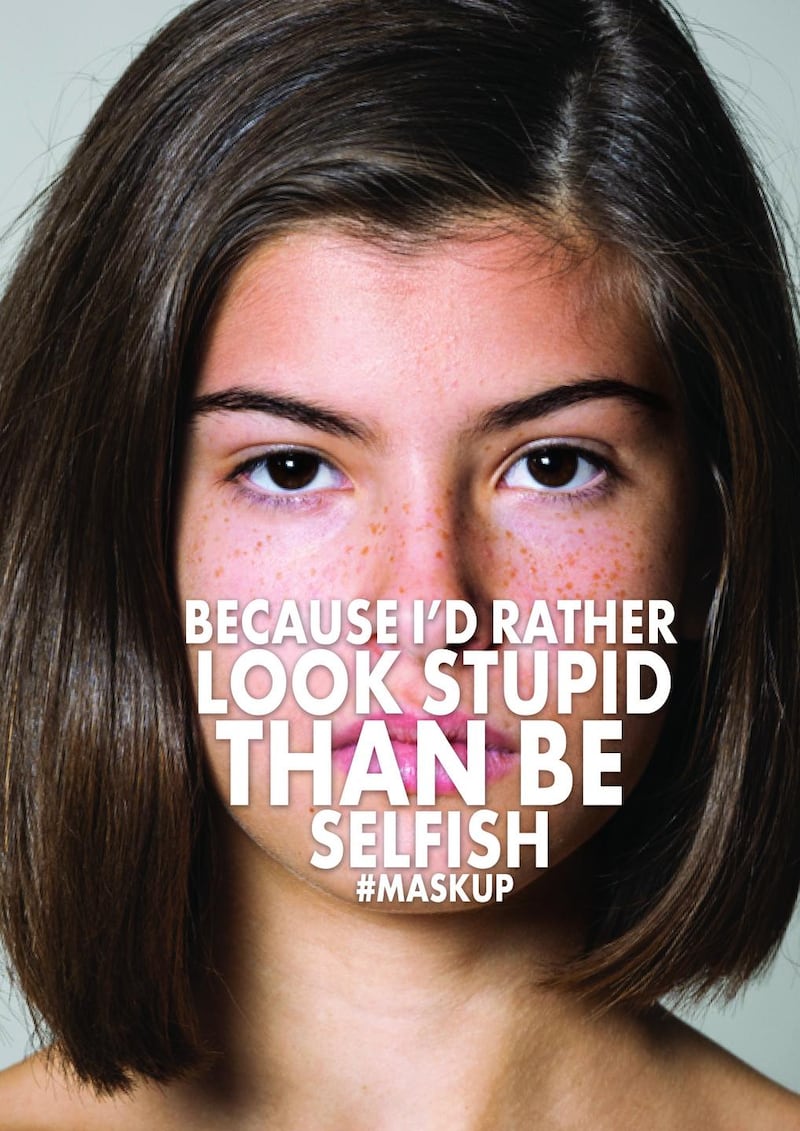
This campaign combines a strong rational and emotional argument for mask wearing – without showing actual masks. “#MASKUP” is a really simple line that has the branding and call to action all in one. As Martin said: “Instead of telling people what to do, we decided to ‘Hero the Helpful’ and get them to share the reasons why they mask up.”
FACE FACTS. FACE MASKS SAVE LIVES
By David Kelly
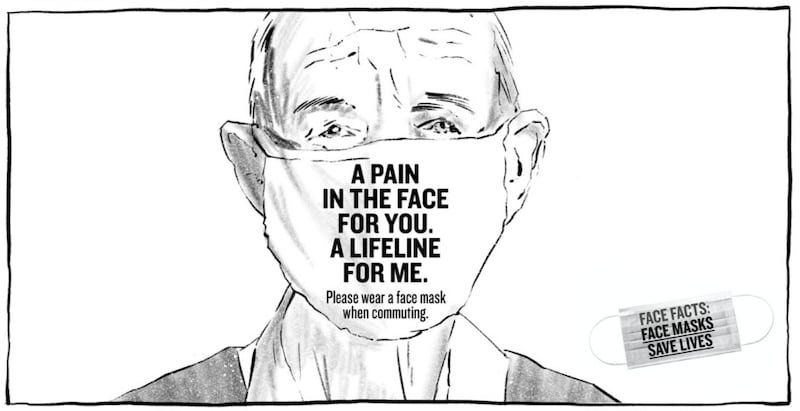
This fact-based treatment tackles the “anti-masker” resistance head-on. Kelly’s campaign line follows the propaganda tradition (“Careless Talk Costs Lives”) and could lend itself to a variety of different treatments.
WEAR A MASK. SAVE A LIFE
By John Martin and Dave Cowzer

This campaign reminds people that even though they might be asymptomatic, they should still wear a mask. It puts the responsibility on to those who think they are “bullet-proof” to help save a life.
TAKING THE PROVOCATIVE ROUTE
By Alexis Bouckaert and Paolo Furlan
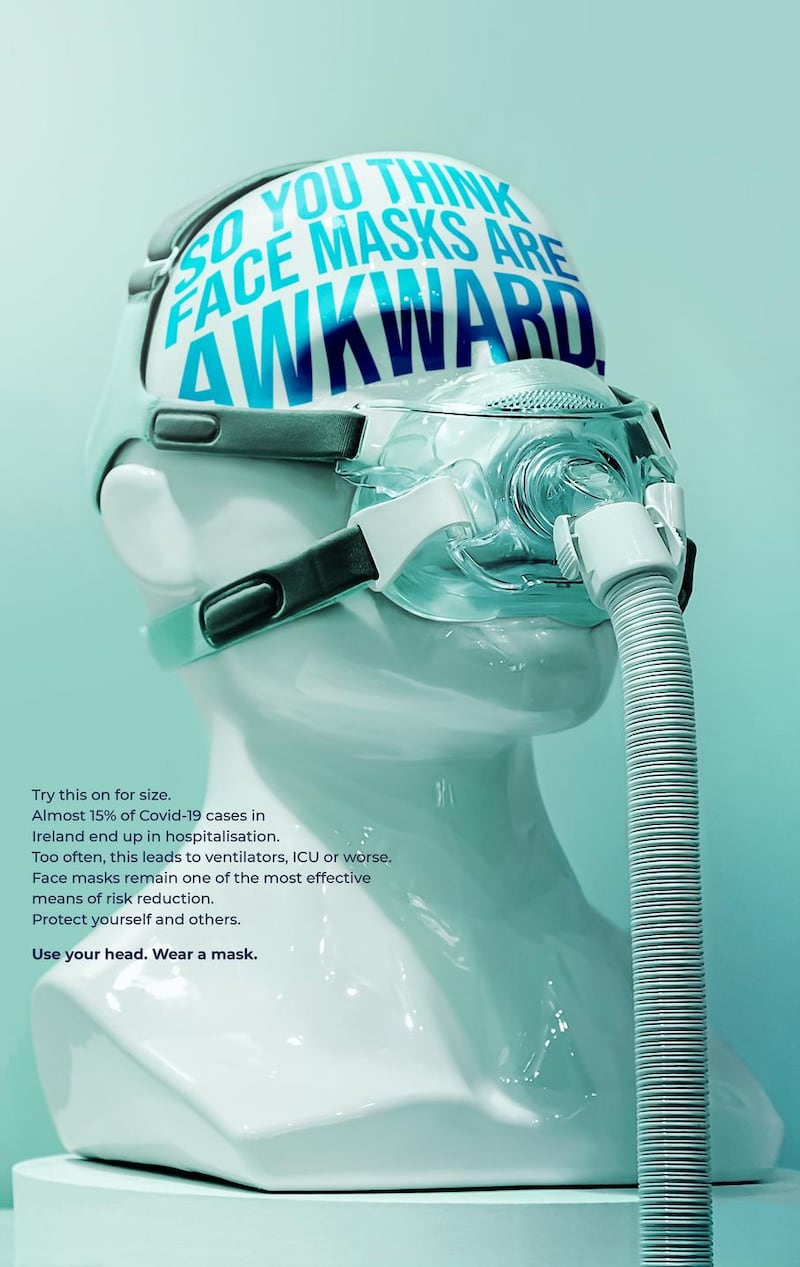
Some creative teams felt that the challenge to change behaviour overnight could only be achieved by being much more provocative. This one uses imagery which is literally in-your-face.
SO EMBARRASSING
By John Martin and David Cowzer
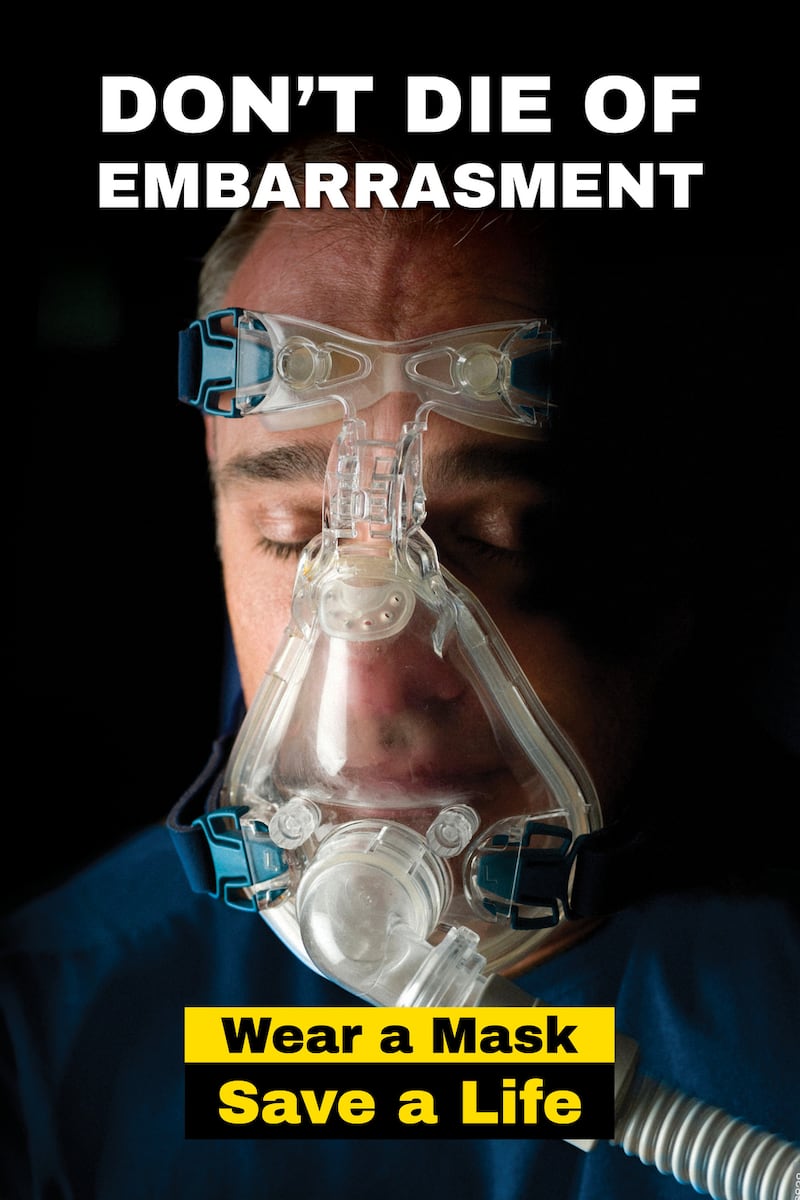
Anecdotal evidence suggests “embarrassment” is a reason given for not wearing a mask.
ON THE STREET
By John Martin and Dave Cowzer
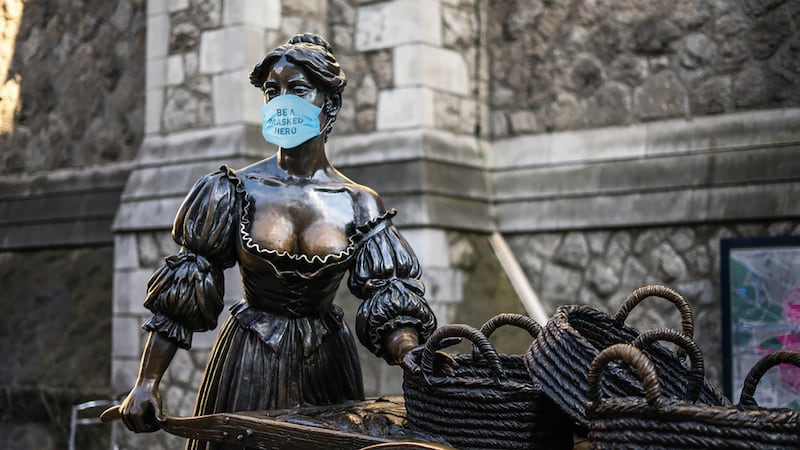
According to McPartlin several concepts involved “hi-jacking” recognisable icons – turning our most famous and loved public statues, into ambassadors for the cause.
SILENCE THE SCREAMS
By Paudge Donaghy and Barry O’Reilly
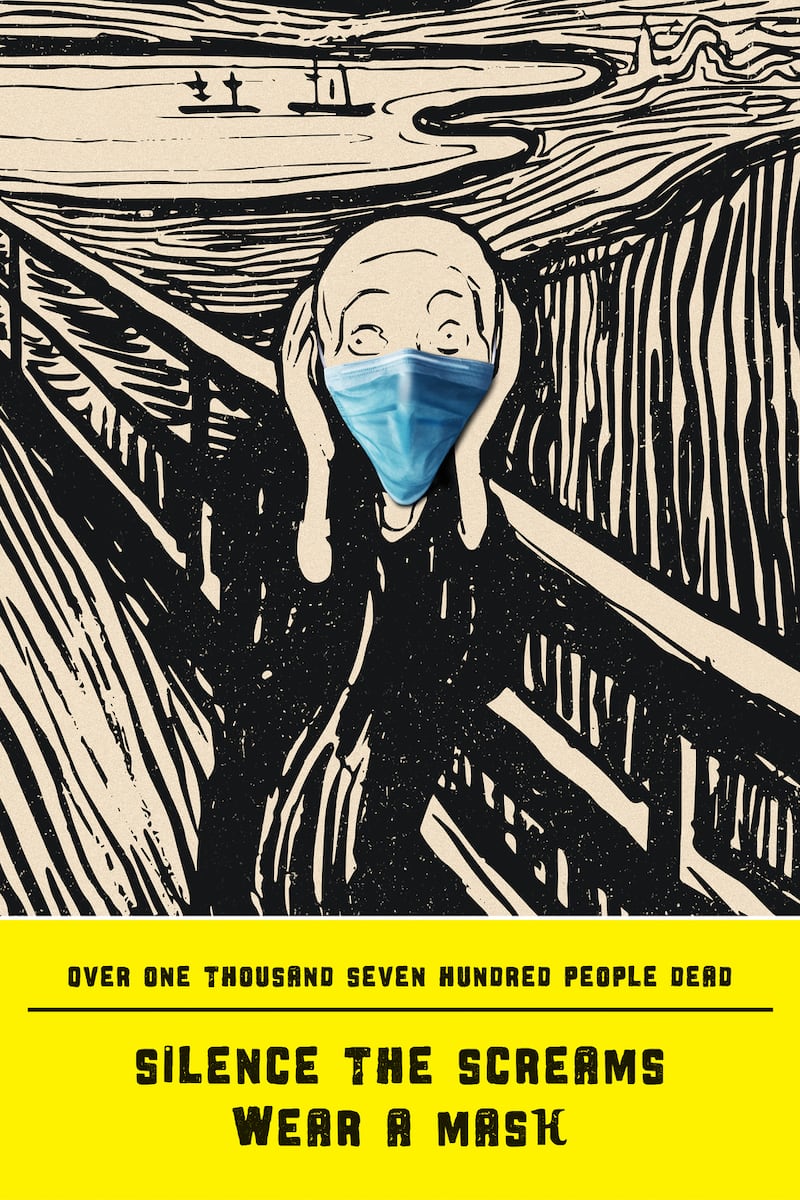
With admirable disregard for quite how much it would cost to get the rights for this – or how long it would take – the creative team used Edvard Munch’s The Scream for their “Silence the screams” idea.
RALLYING THE MEDIA
By Bernie Martin and Nicola Wielopolski
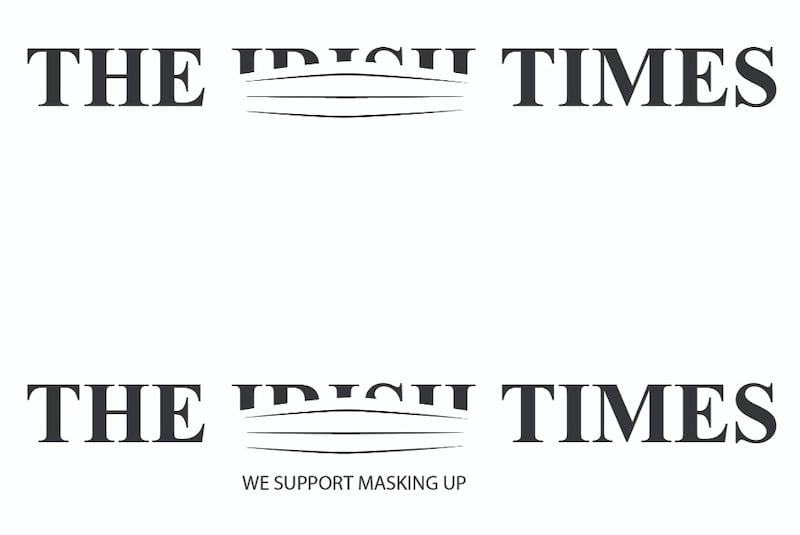
Several creative teams suggested partnerships with media brands beyond traditional advertising to get across the “mask up” message. This one has media or large consumer brands masking up their logos, their presenter or columnist photos on a particular day.
BARE FACED LIES
By John Martin and Dave Cowzer
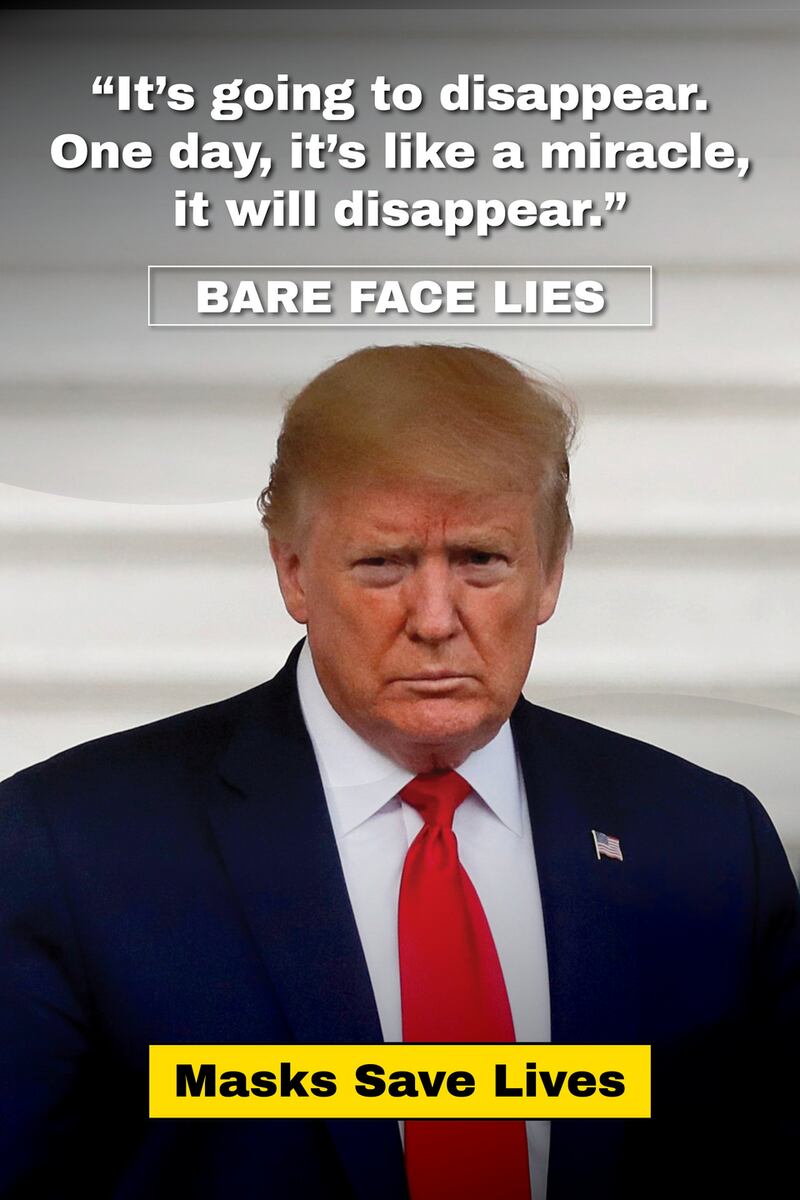
Some politically-inspired satirical takes unlikely to find favour with official or corporate partners but could prove popular with the public if run as a guerrilla campaign.













